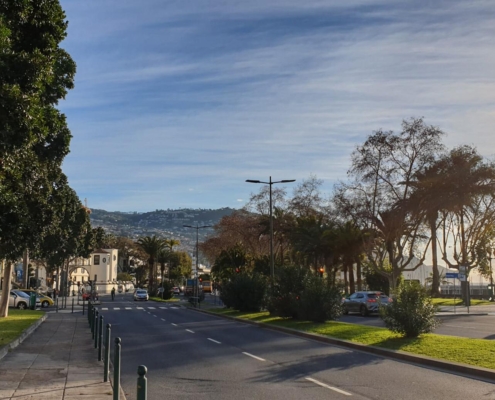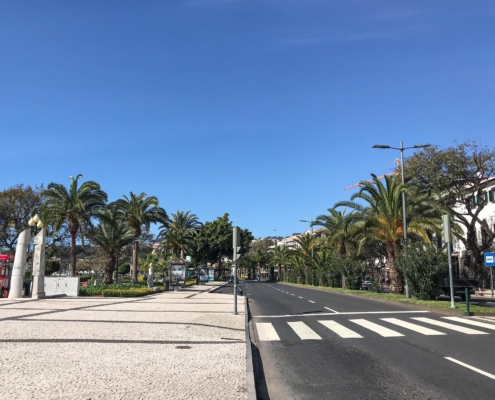Avenida do Mar e das Comunidades Madeirenses
The most well-known avenue of the city has 1300 metres and extends from Sá Carneiro roundabout, in the West side of the city, until Jardim Almirante Reis, at East (at the beginning of Zona Velha/ the old town). It is parallel to Arriaga Avenue although it has a bigger dimension.
Constructed in the 40s from the 20th century, this avenue has its name due to the extension of the sea that can be observed throughout its route as well as a homage done to the Madeiran communities that exist scattered through the world. Popularly is known as just Avenida do Mar (Sea Avenue), a name that was given until de the 80s.
Going through the avenue in the West to the East direction, the first building to highlight is the emblematic Palácio de São Lourenço (Saint Lawrence’s Palace), the perfect postcard of the city. It is one of the examples of military architecture in Madeira Island, built in the 16th century and where we can visit the Military Museum, which exhibits a collection of weaponry from the 17th to the present day.
In the Southern area, the Marina do Funchal (Funchal’s harbour) can be found, with a capacity for 210 boats, where many tourists’ companies operate, as well as a variety of restaurants.
A few metres from the Cais da Cidade (City’s pier), in an area bordered by lawns, we find the remains of the Pilar de Banger, built-in 1798 to transport goods between boats and land. Demolished in 1939, its existence was noticed again in 1990 when what remained of this construction was glued here.
The diversity of heritage buildings on this avenue includes the Assembleia Legislativa da Madeira (Legislative Assembly of Madeira) (built in the old customs house), the Guarda Nacional Republicana (GNR, National Republican Guard), the Capitania do Porto do Funchal (Funchal Port Captaincy) and the building where the Alfândega do Funchal. Which extends along the same alignment, on the upper side of the avenue.
On the southern shore, you can find the Praça do Povo. Built in 2014 as a solution for the embankment created to tide over the debris of the floods of February 20 of 2010. It offers a relaxing garden area, with some art elements scattered around the Garden, such as the Nelson Mandela Memorial, unveiled in 2014.
Passing through Praça da Autonomia, you can visit the Electricity Museum, known to many as the “Casa da Luz” (House of Light). It is located in the area where the old Central Térmica does Funchal once operated. Access is from the north side of the building, on Rua da Casa da Luz and it is a space that is also worth visiting.







